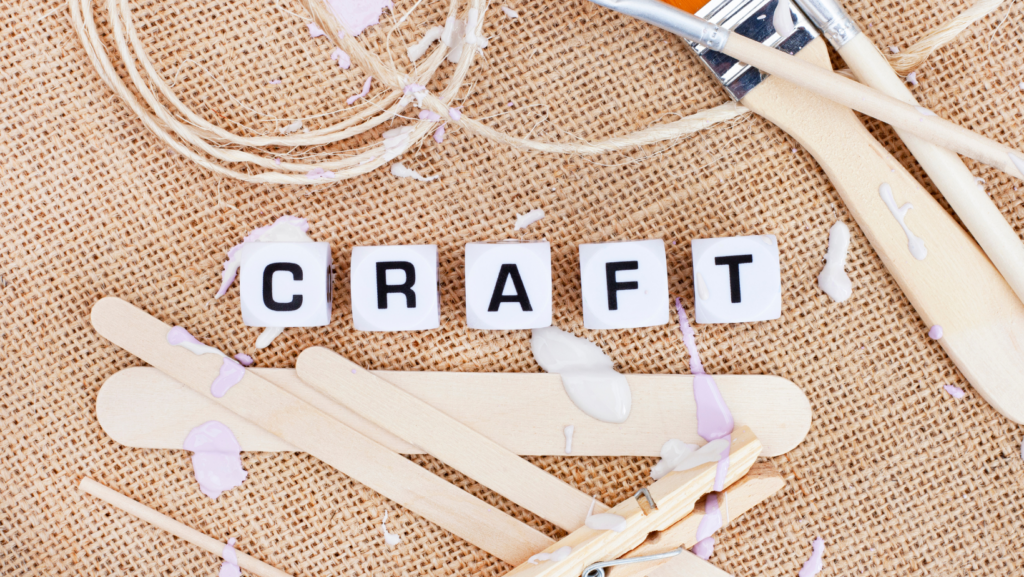Crafting isn’t just a pastime—it’s a journey into the endless realm of creativity. From the simple joy of creating something with your own hands to the satisfaction of seeing the final product, crafting offers an unparalleled experience. Whether you’re a seasoned pro or a novice just venturing into this vibrant world, there’s always something new to learn and explore.
The world of different crafts is as diverse as it is fascinating. It spans across cultures, ages, and skill levels, offering a myriad of options to anyone willing to try. This article will take you on a tour through this captivating world, shedding light on the different crafts that exist and the unique allure each one holds.
Different Crafts
Craft diversity represents a kaleidoscope of cultures, eras, and skill levels, with enchanting options ranging from knitting and pottery to origami and woodworking.
 The Definition of Craft
The Definition of Craft
Craft, simply put, stands for creating with hands. It represents the skill or proficiency in creating an object, particularly by using hands. Traditional crafts such as knitting rely on manual dexterity and applied arts knowledge. In contrast, modern crafts like digital art require proficiency in using tech tools and visualizing concepts.
The Evolution of Crafts
Different Crafts have evolved over centuries, influenced by cultural shifts and technological advancements. Initially, crafts rose as a fundamental survival strategy, with early humans crafting tools, clothing, and shelter from available materials.
Stone age pottery, for example, illustrates how early men honed their craft skills. They used clay, a readily available material, to make functional pots, which also spoke volumes of their creative pursuits.
Traditional Crafts Around the World
Textile Arts
Textile arts, encompassing skills such as weaving, knitting, and embroidery, represent a vibrant spectrum of traditional crafts across the globe. Exemplifying this, Japan’s Sashiko stitching and India’s Kantha embroidery define textile arts in Asia. African Kente cloth, typically woven by Ghana’s Ashanti and Ewe people, celebrates the vibrant and intricate pattern work distinct to Africa. Andean nations like Peru and Bolivia display expertise in alpaca wool weaving, embodying South American artistry.
Pottery and Ceramics
Pottery and ceramics, some of the oldest arts, resonate worldwide. For instance, Chinese porcelain, famed for its fine quality and beautiful blue and white designs, has massive international recognition. Native American tribes like the Hopi and the Zuni have contributed their unique earthenware and stoneware to the art’s history. Mexican Talavera pottery and Greek terracotta vases are other examples, presenting the diverse panorama of worldwide pottery styles.
Woodworking and Carpentry
Traditional woodworking and carpentry practices vary significantly globally. Japanese Joinery, known for its intricate, clean lines, and precise cuts, is juxtaposed against Nordic countries’ rustic, robust woodworking traditions. Maori wood carving from New Zealand, with its intricate whirl patterns, adds another facet to the diversity, while furniture designs from Shaker communities in the US reflect minimalistic, functional aesthetics.
Modern Craft Movements
As crafts evolve, they reflect the shifts in society and culture. Noteworthy recent trends include Do-It-Yourself (DIY) and Maker culture, Upcycling and Eco-crafts, and Digital Crafting. Each symbolizes a different perspective towards craftsmanship, with unique motivations and outcomes.
Upcycling and Eco-Crafts
As consciousness about sustainability increases, crafting movements respond in kind. Upcycling and eco-crafts represent a pairing of creativity with environmental stewardship. Often derived from discarded materials, these crafts imbue fresh life into items otherwise bound for the landfill. Examples of eco-crafts can be seen in Suzanna Scott’s coin sculptures, where she turns pennies into intricate art pieces, or Clearstory’s repurposed leather journals.
Digital Crafting
Representing the intersection of technology with artistry, Digital crafting is a growing movement in the modern world. Digital tools revolutionize the crafting process, opening new realms of possibilities. 3D printing, for example, completely upturns traditional sculpting. Likewise, Craftsmen can use laser cutters to achieve precision and complexity in design that was previously impossible.
Different Crafts, whether traditional or modern, play a crucial role in our society. They’ve evolved from simple hobbies to powerful tools for education, fostering creativity and problem-solving skills. They’ve also become a bridge to preserving cultural heritage, with schools globally integrating craft lessons to safeguard native crafts. The rise of the craft market has seen artisans transition from hobbyists to entrepreneurs, with platforms like Etsy providing a commercial outlet.
